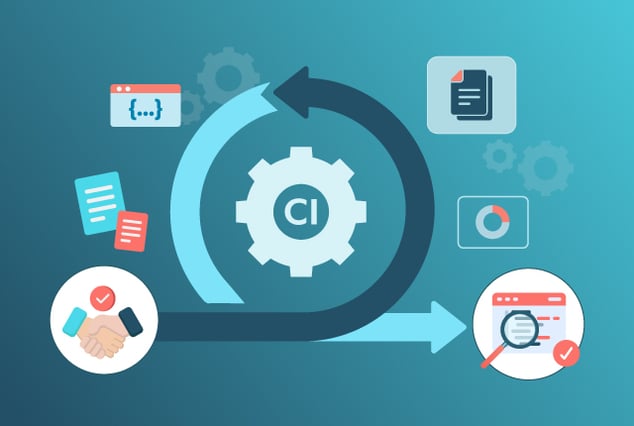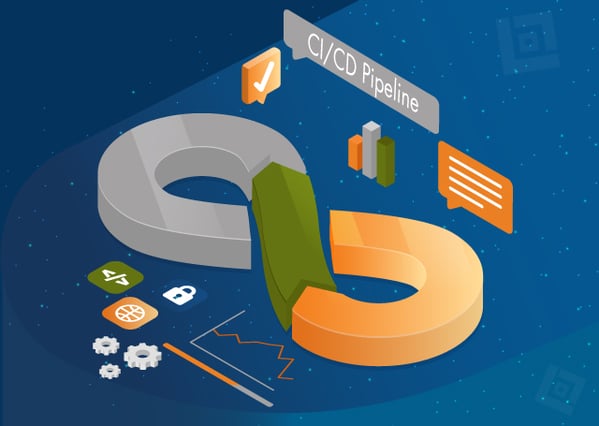
Integration testing ensures that all your components work together seamlessly within your app before deployment. And when paired with continuous integration, your software product is destined to win the championship.
You can think of it like assembling a team of all-star athletes and hoping they play well together. Can the players cooperate so that their strengths blend into one winning strategy? Or will an MVP fight so much with a teammate that you’re kicked out of the game?
You can develop strong components in isolation. But if they don’t “play nicely” with others within your software application, you’re left with a broken system.
In this complete guide, we explore answers to your most pressing questions, including:
- What is integration testing in software engineering?
- What are the benefits of integration testing?
- What are ways to overcome common integration testing challenges?
- How do I follow integration testing best practices?
What is Integration Testing?
Software integration testing is a type of software test that validates the interactions between components within an application system. This type of QA testing is often referenced as string testing, thread testing and I & T (Integration & Testing). When following integration testing best practices, QA engineers verify that modules are logically integrated within the software and tested as a group.
Types of Integration Tests
To prevent integration testing challenges, we recommend running both types of software integration testing in every development cycle. After all, what is integration testing in software engineering without testing every level of the application? Integration testing best practices always includes performing these two distinct types of testing:
- Component Integration Testing: This is low-level integration testing. Your team runs tests via integration testing tools aimed to expose any defects between interactions of integrated system components.
- System Integration Testing: This is high-level integration testing. Here is when you test the integration of systems and packages within your application as well as the interfaces to external organizations, such as the Internet or Electronic Data Interchange.
Four Different Approaches to Integration Testing
One of the biggest integration testing challenges that QA teams run into is finding the right approach for running these kinds of tests. It’s difficult to follow integration testing best practices if a certain approach isn’t compatible with your testing cycle or project. Fortunately, your team has multiple options on how to run tests with integration testing tools.
- Big Bang Approach: Testers combine all units together and test them all at the same time. This is a convenient way to test when your QA team receives the software as one bundle and can be an effective testing approach for small systems. On the flip side, critical modules—including those tied to interface interactions—are not isolated for testing.
- Top Down Approach: In this software integration testing approach, top-level components are tested first before lower-level modules. Development cycles take this approach when following top-down development. The benefits of integration testing with this approach include the ability to test critical modules on priority and the ability to run tests sooner. However, many stubs are needed and lower-level modules are tested inadequately, which can cause many integration testing challenges for QA teams.
- Bottom Up Approach: As a reverse of the top down approach, lower-level modules are testing first before top-level components. Development cycles take this approach when following bottom-up development. This approach allows QA teams to test sooner, however critical top-level modules that control the application flow are tested last, giving developers less time to resolve defects within these components.
- Sandwich/Hybrid: This strategy combines both top down and bottom up approaches. Top-level components are tested with lower-level modules at the same moment that lower-level modules are integrated with top-level components. With this approach, testers rely on both stubs and drivers for successful testing.
Integration Testing Tools
Identifying the software testing tools you need is critical when implementing integration tests. Your QA team can enjoy even more benefits of integration testing simply by integrating the right set of integration testing tools within your QA process. We at QASource recommend considering these testing tools for your software integration testing process.
- Crosscheck Networks SOAPSonar: This testing platform specializes in API testing which is highly compatible with integration testing. Testers can also run performance testing and security testing while testing interactions across modules.
- IBM Rational Test Workbench: Formerly known as Green Hat, this testing tool provides a script-free environment for running integration tests. Its Rational Integration Tester tool enables agile and iterative development processes, preventing integration problems within your system.
- CA Technologies Application Test: This tool offers QA testers a codeless framework for both integration testing and API testing. Various testing layers and levels within the platform support thorough testing of your application.
- Parasoft SOATest: Through machine learning and AI, this testing tool focuses specifically on integration testing, API testing and web services testing. This platform also integrates well with continuous integration practices and continuous deployment tools including GitLab and Jenkins.
- Citrus: This Java-written test framework assists well in automated integration testing, particularly for message-based application and data formats. This tool can validate for XML, JSON and plain text messaging request and response data.
Benefits of Integration Testing
When best practices are in place, there are so many advantages that software integration testing can deliver to your development cycle and software application. With a full understanding of what integration testing is, your team is bound to experience these integration testing benefits.
-
Optimized Business Processes that Reduce Costs and Bottlenecks
Undetected defects deployed into production can be costly, especially those that impact the security or user experience of your product. Integration testing prevents this by catching the bugs associated with component integration during testing so that your consumers always experience an optimal interface. Catching integration issues during QA reduces problems within the product in the future, thus allowing your developers to focus more on product enhancements instead of product fixes.
-
Higher Code Coverage
Essentially, your software system consists of a series of components that work together. Since integration testing focuses on how well these components interact, your QA testers must create test cases that cover all interaction points. This means that more of your product code must be tested for verification, thus allowing your team to confirm with confidence that your application is ready for market.
-
Testing Happens Sooner
In integration testing, test cases can still be run even when some of the modules are not ready for QA. This gives your testers more time to discover any issues in component interaction, meaning your developers have more time to fix these issues. When issues are discovered during the early stages of testing, it reduces the chances of these bugs getting into your software system.
Does your team need help carrying out these best practices for software integration testing? Choose to partner with a leading software testing company like QASource. Our team of testing experts specialize in a variety of QA services with years of experience performing integration testing for applications across domains. We can guide your team through the process of implementing integration testing within your QA processes so that your product always promises a quality experience for your end-users. Get a free quote today.




